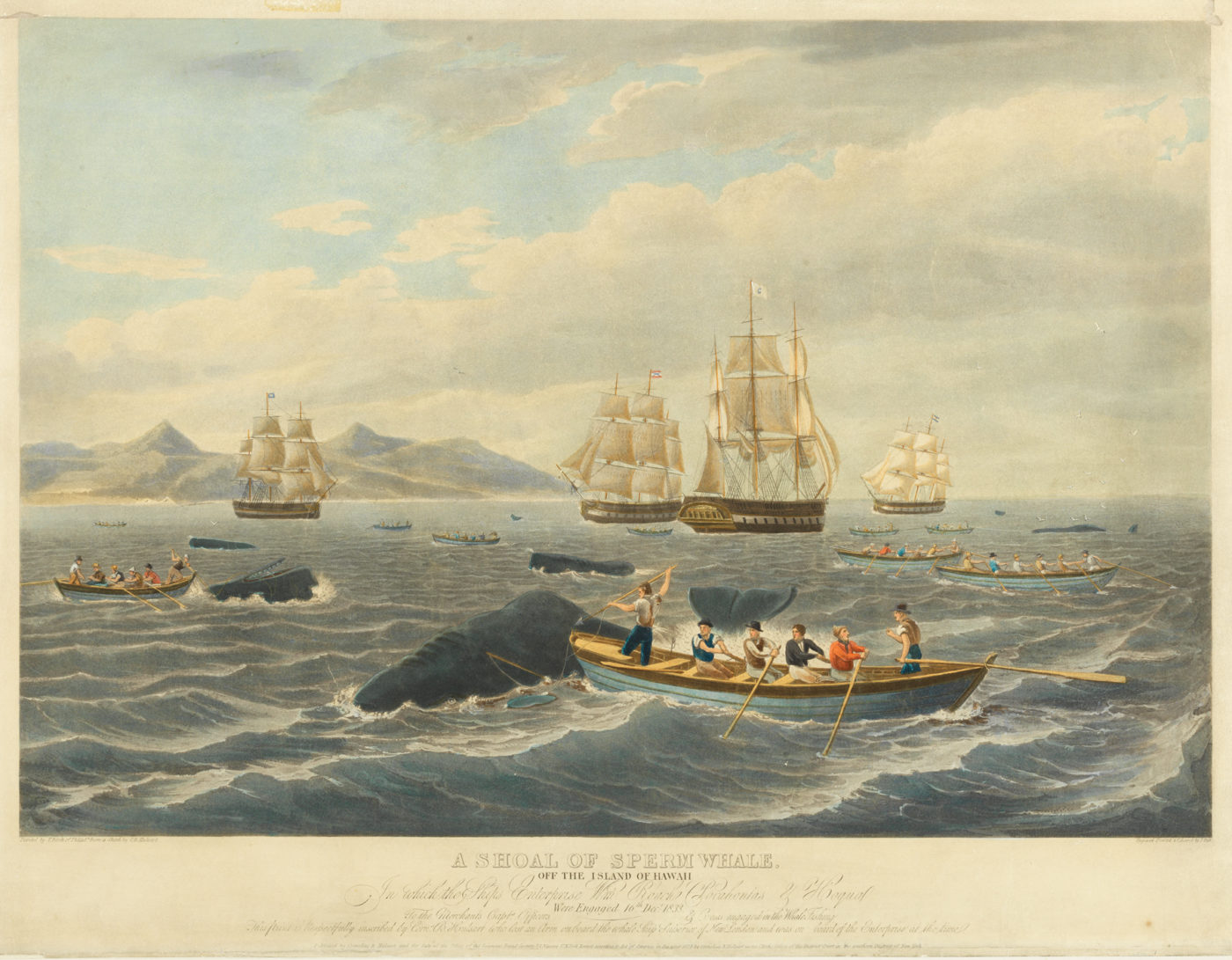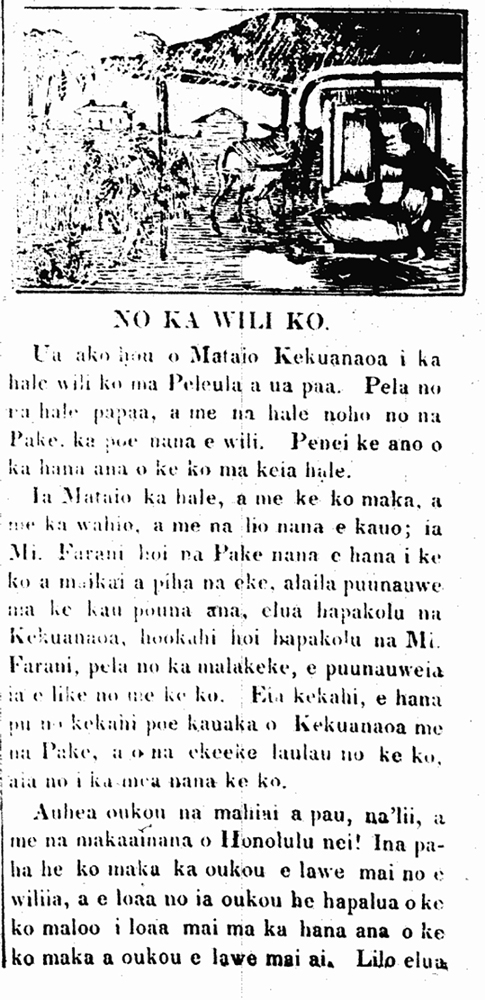With the arrival of foreigners, Hawai‘i’s economy expanded beyond traditional systems. An economy founded on provisioning early trading ships shifted to the development of the sandalwood trade, and then changed again with the arrival of whaling ships in 1820. The economic changes were complicated by the rapid decline in the native population, and the depletion of sandalwood and collapse of its trade by 1831. Hawai‘i’s growing integration with the global economy prompted the beginnings of plantation-based agriculture.
Growth of Whaling
- From 1820, whaling ships had been making semi-annual provisioning stops in Hawai‘i, building a bustling market for potatoes, beef, pork and firewood, and developing urban centers for servicing the ships and their crews. By the late 1820s over 150 ships were stopping in Hawai‘i annually. This fluctuated during the 1830s, again increasing by 1843 to over 350 annual visits.
- Whaling enticed workers to the hubs of Honolulu, Lahaina and Hilo, but did not generate extensive demand for agricultural products until the 1840s.
- The unpredictability of the whaling trade ultimately prompted the need for a more secure basis for trade. The Hawaiian government turned to plantations as the answer. This decision would have major political, social and economic repercussions in Hawai‘i.
— Ralph Kuykendall, The Hawaiian Kingdom, p. 311
Agricultural Production
- The missionaries played an important role in encouraging agriculture, which they saw as a hallmark of civilization. Despite the ingenious agricultural systems that Hawaiians had developed, such as kalo terraces and fishponds, the missionaries promoted “the growth of cotton, coffee, sugar cane, etc., that the people may have more business on their hands, and increase their temporal comforts.”9 This shifted the focus of crops for trade rather than sustenance.
- Foreigners began to partner with ali‘i to develop small plantations. In 1825, an Englishman established a plan with Governor Boki to cultivate sugarcane and coffee in Manoa. The sugar mill, however, was converted to a rum distillery, which ran afoul of temperance laws and was closed.
- Others attempted to grow cotton for cloth-making, spinning and knitting, and to cultivate a small silk industry.
— Ralph Kuykendall, The Hawaiian Kingdom, p. 174
The Rise of Sugar
- In 1835, Ladd & Company established Hawai‘i’s first permanent sugar-cane plantation in Kōloa, Kaua‘i. The American company secured a 50-year lease on a large parcel of land and received permission to employ Hawaiian workers. Laborers were paid 12.5 cents a day. During the first year of the plantation’s short run, they planted 25 acres of sugarcane, 5,000 coffee trees and 5,000 banana trees.
- Also in 1835, another American, William French, brought Chinese sugar makers with their equipment to Kaua‘i, in hopes of establishing a plantation. By 1838, he moved his mill to O‘ahu. Missionaries also cultivated sugar and built mills on Kaua‘i, O‘ahu and Maui, with many of the mills set up and operated by Chinese.
- In 1840, sugar exports from Hawai‘i totaled 180 tons.
— Rev. Richard Armstrong, written from Wailuku, Maui on July 7, 184010
While whaling continued to dominate the economy, efforts were underway to develop staple crops for export and secure more reliable trade. By 1840, only coffee and sugar looked promising. Sugar was being grown in all parts of the Kingdom, though only the Ladd & Co. enterprise on Kaua‘i was a real plantation. From 1834 – 1841, Hawai‘i’s main trading partners were California, Mexico and South America. California, later joined by Oregon, came to dominate the trade, sending shipments of horses, lumber and soap to the islands in exchange for sugar, molasses and coffee.
9 Kuykendall, The Hawaiian Kingdom, p. 174.
10 Ibid., p. 180.



